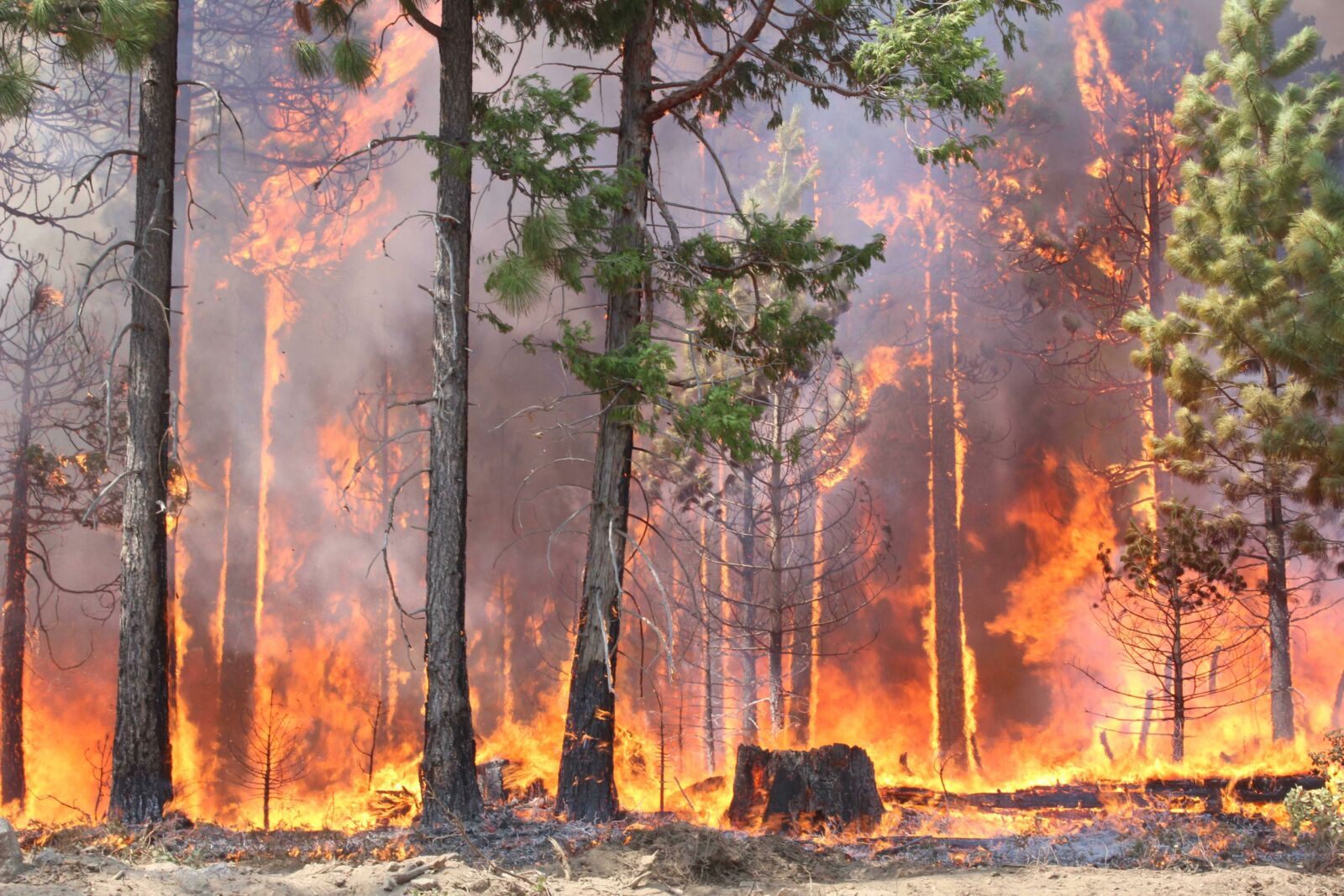Who can forget the iconic forest fire scene in the Disney’s Bambi? For many young children, myself included, this is the first exposure to wildfire. Adorable and helpless bunnies, possums and deer running from a fire set by a man. So, what exactly is the impact of forest fires on wildlife? It turns out that like most things in life, it’s a mixed bag. On one hand, wildfire is a natural part of the ecosystem in the western United States, and wildlife has a long relationship with it. Some species even benefit from the blazes. On the other hand, of course fire can be dangerous to animals and plants that can’t outrun it.
Some animals do die in the flames of wildfires, mostly the elderly and very young animals who can’t escape. However, the majority of wildlife mortalities come after the fire is out, due to the loss of important habitat and food sources burned in the fire. The burns create a new type of habitat, usually open areas where dense forests used to be that are quickly colonized by grasses and shrubs. This creates an opportunity for invasive species to move in before native species get the chance, which can have harmful impacts on the landscape.

Photo by Mike McMillan, courtesy of the U.S. Forest Service
Wildfire causes wildlife to move, avoiding flames and searching for new habitat. This migration can cause animals to wander into densely human populated areas and come into contact with humans they would normally avoid. However, there are many positives to wildlife and the ecosystem at large as well.
Animals have a honed sense of danger, so when wildfire occurs, most animals sense it and can run away or stand in streams to avoid the hazard. Smaller animals take cover in logs, under rocks, or by burying themselves in the dirt. Some animal predators even capitalize on the fire, and have been observed hunting smaller animals who are fleeing the fire. Another positive impact from wildfires is that some species, like the jack pine, rely on fire to release their seeds. Ashes that the fire leaves behind fertilize the soil for the seeds can grow. Fire suppression over the past century has led to dense, overgrown forests, and fire removes dead and diseased plants, allowing more sunlight to reach the ground. Healthy small fires lead to ‘islands’ of different microhabitats, which increases biodiversity which in turn increases the resiliency of the ecosystem.
Wildfires are apart of a healthy ecosystem, and while they may inflict some animal casualties in the short term, they are a part of the natural cycle. Without them, forests become overgrown and burn more intensely when they do catch flame. Animals have developed their own methods of avoiding fire danger, so don’t worry too much about Bambi.
This blog is sponsored by Starbucks. Starbucks is committed to supporting our public lands through planting 200,000 trees on our National Forests.
Learn more:
Cover photo by Mike McMillan, courtesy of the U.S. Forest Service.
--------
Bison, bears, bats…you name it, and forests have it. We hope you enjoyed this blog and that you’ll explore the other fascinating wildlife topics here. Just as the wildlife we all cherish depends on healthy habitat, the NFF depends on support from generous, involved individuals like you! Please click here to make a much-needed unrestricted gift today. On behalf of the bison, bears, bats, and countless more creatures, thank you!

